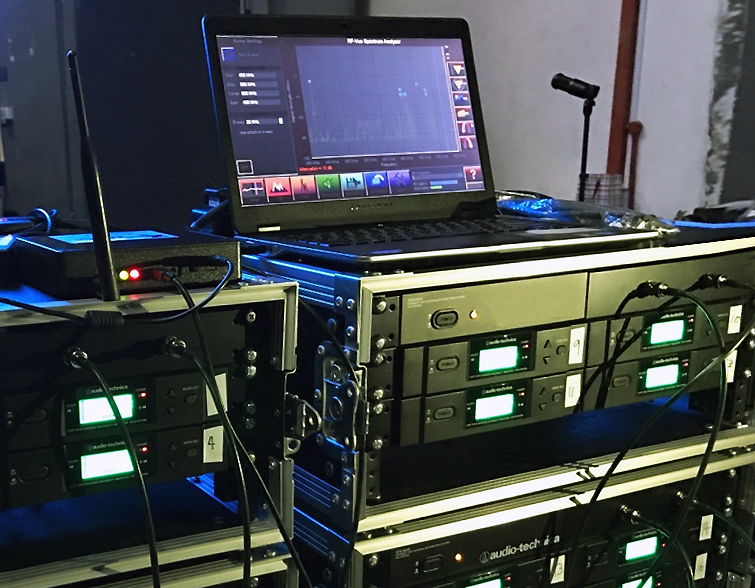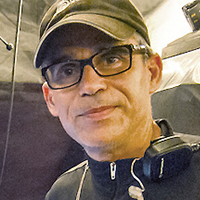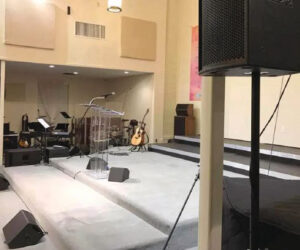For many in professional audio, working with wireless systems is still thought to be a “nightmare” filled with peril, an accident waiting to happen, and so on. In actual fact, wireless systems are meant to work and in fact do work every day in thousands of concerts, theatrical productions, festivals, churches, broadcasts and the like, all around the world.
With that in mind, I’ve compiled this list of troubleshooting steps to take when encountering wireless problems in the field. Hopefully it will alleviate the apprehension many experience while also solving the problem.
Step 1. Develop a positive attitude. As noted, RF gear is supposed to work. Understanding and believing that – instead of believing that it’s nothing but trouble – is critical to resolving issues when they arise.
Step 2. The first question to ask when encountering RF problems at an event: Is this system coordinated? It’s especially true if there are problems with multiple systems at the same time.
I’ve been doing frequency coordination since the early 1990s, and in all that time I’ve had barely enough problems to come up with material for this article. Frequency coordination is no longer an option – it’s an essential.
Ideally, frequency coordination should be done before the equipment rolls in but in the event that it hasn’t been done, here are some things to do to improve things:
– Someone must take charge and get all RF users on the same page.
– Compile a list of all wireless equipment and frequency ranges in use.
– Doing rudimentary band planning and doling out a chunk of spectrum to each user can help. For example, the two backline techs on a gig both have Sennheiser “B” (626 to 668 MHz) band systems. A quick scan with one of the receivers shows DTV channels 40, 41 and 44 are present, which takes up 626 to 638 MHz and 650 to 656 MHz. Solution: tech number 1 gets 639 to 650 MHz and tech number 2 gets 657 to 668 MHz. It’s not frequency coordination, but it does help eliminate the “every man for himself” mentality and brings some order to a chaotic situation.
Another approach, in the absence of a real coordination, is sequential scanning. It works as follows:
– Turn on “money channel” systems and scan for the best frequency available.
– Place these transmitters on stands (don’t leave them in a pile on a road case) and leave them on.
– Then scan the next most important systems, place them where they’ll be used and leave them on, and then repeat with each successive system until all are turned on. Again, this is a long way from a proper coordination, but it’s better than nothing.
One last point: if there is frequency coordination at an event, make sure that everyone is on the same coordination. I’ve noticed that now that coordination is becoming more common, a lot of rental houses are sending a coordinator report out with RF rentals. This is great if they’re providing the whole equipment package, but if, say, the mics and IEMs are from one company, the backline from another, and the RF intercom from a third, and each company provides a coordination report with its rental, there’s a very good chance that all three coordinations will be null-and-void.
Step 3. A key question to ask yourself about a potential problem: Is this real or a red herring? For example, a vocal channel that has been rock-solid all day is suddenly taking hits a half hour before show time. The natural tendency is to look for another frequency, but before doing that, an important thing to determine is “where is the transmitter right now?”
If it’s out on stage, on it’s stand, there may be a real issue. However, if it’s not in the stage area because it’s been taken down the hall to the artist’s dressing room, what you’re probably seeing is the receiver trying really hard to keep receiving its transmitter. Modern RF gear is designed to be very selective about what signals will actually cause it to “open up” and pass an audio signal to its output, so it pays to remember that the one thing that will do that without fail is the transmitter that has been programmed to the same frequency.
Also keep in mind is that if you do change the frequency, the problem will appear to be fixed, but really all you’re doing is setting the receiver to a frequency that it doesn’t see its own carrier on. Then, when the transmitter is brought back to the stage to sync to the new frequency, the problem is “solved” because the transmitter is back within range of the receiver.















